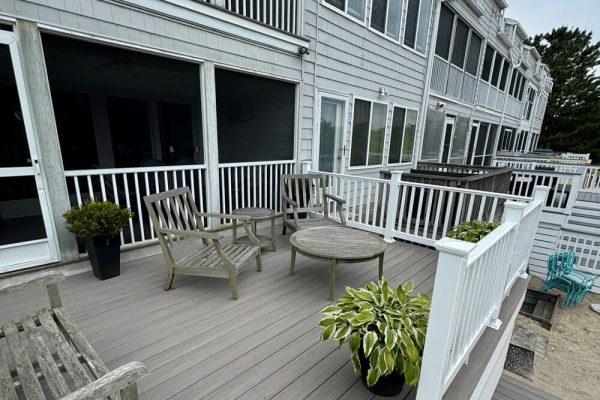Frequently Asked Questions
Can I add a second story to my existing home?
Adding a second story to your existing home is possible, but it requires careful planning, structural assessments, and adherence to local building codes, especially in coastal areas where elevation and materials must be considered.
What are the must-haves for a successful home remodel?
The must-haves for a successful home remodel include a clear budget, quality materials suited for coastal climates, a dependable contractor, and a well-thought-out design that enhances functionality and aesthetics while addressing local environmental challenges.
What are the common home addition mistakes to avoid?
Common home addition mistakes to avoid include underestimating budgets, neglecting local building codes, choosing unsuitable materials for coastal climates, and failing to verify contractor qualifications. Planning and research are crucial for a successful renovation.
What are some popular home addition design ideas?
Popular home addition design ideas include expanding living spaces with open-concept layouts, adding sunrooms to enhance natural light, creating outdoor decks for coastal enjoyment, and incorporating multi-purpose guest suites to maximize functionality.
What is the average cost of a home addition?
The average cost of a home addition typically ranges from $80 to $200 per square foot, depending on factors such as location, materials, and complexity of the design.
Can I add a home addition with a small budget?
Adding a home addition with a small budget is possible by prioritizing essential features, using cost-effective materials, and considering DIY options. Careful planning and budgeting can lead to a successful addition that enhances your coastal home without overspending.
What are the benefits of adding a home extension?
The benefits of adding a home extension include increased living space, enhanced property value, and improved functionality tailored to your lifestyle needs. Extensions can also allow better integration with the coastal environment while addressing climate challenges effectively.
How do I plan a successful home addition project?
Planning a successful home addition project involves careful budgeting, selecting durable materials suited for coastal conditions, and hiring credible contractors. Assess your needs and ensure the design integrates seamlessly with your existing home.
Can I live in my home during the addition process?
You can live in your home during the addition process, but it often depends on the scale of the project and the areas being renovated. It's essential to consider safety, disruption, and access to essential utilities when making this decision.
How long does a typical home addition project take?
The duration of a typical home addition project can vary, but it generally takes between three to six months to complete, depending on the project's complexity, design, and permitting processes.
What permits are needed for a second story?
The permits needed for a second story typically include a building permit, structural engineering approval, and possibly zoning permits. It's essential to check local regulations to ensure compliance with specific requirements for coastal areas.
How to choose materials for home additions?
Choosing materials for home additions involves considering durability, climate compatibility, and aesthetic harmony with existing structures. Prioritize moisture-resistant and weather-appropriate options to ensure longevity and maintain the coastal charm of your home.
What design styles are popular for home extensions?
Popular design styles for home extensions include contemporary, which emphasizes sleek lines and minimalism; coastal, featuring light colors and natural materials; and farmhouse, characterized by rustic charm and functional layouts. These styles enhance the aesthetics and functionality of your home.
How can I maximize space in a home addition?
Maximizing space in a home addition involves smart design choices such as open floor plans, built-in storage solutions, and utilizing vertical space effectively. Consider multi-functional furniture and incorporating natural light to enhance the sense of openness.
What factors affect home addition project timelines?
The factors that affect home addition project timelines include design complexity, permitting processes, material availability, weather conditions, and contractor workload. Each of these elements can significantly influence the overall duration of the project.
How to finance a home addition effectively?
Financing a home addition effectively involves exploring options such as home equity loans, personal loans, or refinancing your mortgage. Assess your budget, compare interest rates, and ensure repayment terms align with your financial goals to make an informed decision.
What are essential features for second-story designs?
Essential features for second-story designs include sturdy structural support, proper insulation for temperature control, strategic window placement for natural light and views, and compliance with local building codes to ensure safety and functionality.
How to ensure structural integrity during additions?
Ensuring structural integrity during additions involves hiring qualified professionals, using high-quality materials, adhering to local building codes, and conducting thorough inspections throughout the construction process to address potential issues early.
What utilities need adjustment for home extensions?
Utilities that often need adjustment for home extensions include plumbing, electrical systems, and HVAC configurations. Ensuring these utilities are adequately upgraded and integrated can optimize functionality and comfort in the newly added spaces.
How to communicate with contractors during projects?
Effective communication with contractors during projects is crucial. Regularly discuss progress, expectations, and any concerns while using clear, concise language. Establishing open lines of communication ensures alignment and addresses any issues promptly.
